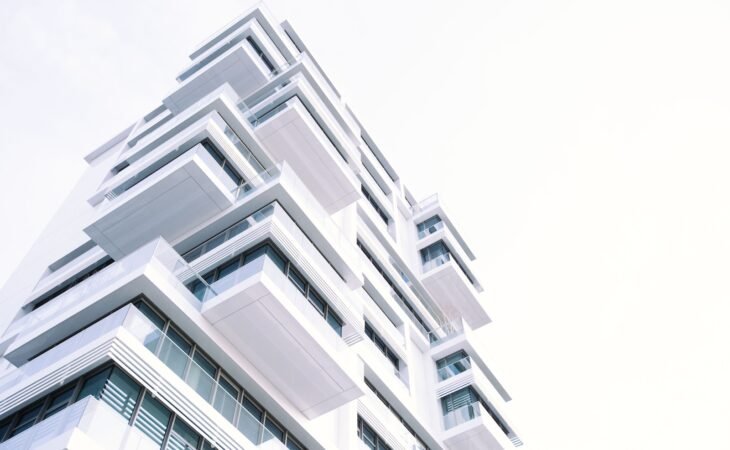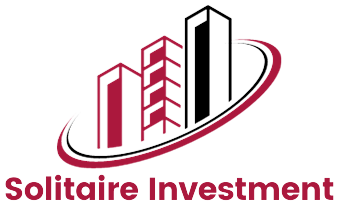
As we venture into 2024, the Dubai property market continues to assert its position as a beacon of robust growth and dynamic investment opportunities. This thriving market, known for its architectural marvels and strategic geographical location, is showcasing a promising landscape that beckons investors worldwide. Factors such as supply constraints, heightened demand from global economic powerhouses like China and India, and an expanding appeal to a diverse investor base are fueling this positive momentum.
A recent report from Knight Frank forecasts a notable rise in property prices, predicting a 5% increase across prime markets such as The Palm Jumeirah and Emirates Hills. Other areas are expected to witness a growth of around 3.5%. While this growth rate may be more modest compared to the boom of 2022 and 2023, it still signifies one of the best real estate returns on investment globally, especially when considering the appealing yields of 5 to 7%.
In this blog, we delve into the intricate tapestry of Dubai’s property market as it stands in 2024. From analyzing the average market outlook, including capital appreciation and rental yields, to exploring the factors contributing to this upward trajectory, we aim to provide a comprehensive guide for investors navigating this vibrant market. Whether you are a seasoned investor or a newcomer to Dubai’s real estate scene, understanding the nuances of this market will be key to making informed and lucrative investment decisions.
As we delve into the Dubai property market in 2024, it’s essential to grasp the underlying factors contributing to its growth and the trends shaping its future. The market is experiencing a confluence of factors that signal a healthy and promising investment environment.
The market analysis for Dubai in 2024 paints a picture of a robust and appealing real estate landscape. The combination of steady growth in prime areas, attractive rental yields, and a market grounded in solid economic fundamentals offers a fertile ground for investors. As the market continues to evolve, these factors will play a crucial role in shaping investment strategies and decisions in the ever-dynamic Dubai property market.
The Dubai property market’s resurgence and sustained growth in 2024 are not phenomena occurring in isolation. Several key economic factors are driving this positive trend, making the emirate an attractive destination for real estate investors globally.
These economic factors collectively contribute to a conducive environment for real estate investment in Dubai. The government’s investor-friendly policies, the city’s global appeal, and a stable economic backdrop are pivotal in maintaining Dubai’s position as a premier destination for real estate investment in 2024 and beyond.
In 2024, Dubai’s real estate landscape continues to be defined by its luxurious and prime residential properties, which remain at the forefront of attracting high-end investors. With an anticipated surge in property prices, especially in the most coveted areas, investors have a keen eye on these prime locations.
In 2024, prime residential properties in Dubai are more than just living spaces; they are symbols of luxury, status, and investment savvy. For investors and high-net-worth individuals, these areas offer not only a home but also a valuable asset in a city that continues to set the standard for luxury real estate globally. As the market evolves, these prime locations are expected to retain their allure, offering compelling opportunities for those looking to invest in the upper echelons of Dubai’s real estate market.
In 2024, alongside Dubai’s established luxury markets, several emerging areas are gaining prominence, offering exciting opportunities for investors and homebuyers. These neighborhoods are witnessing significant growth, making them attractive for those looking for potential high returns and new lifestyle options.
In 2024, these emerging areas in Dubai are not just about real estate investment; they represent a lifestyle choice, a community feel, and a promise of future growth. For investors and homebuyers, keeping an eye on these areas could unveil opportunities that align with both their financial goals and lifestyle aspirations. As the Dubai property market continues to mature, these emerging neighborhoods are expected to play a significant role in shaping the city’s real estate landscape.
In 2024, the Dubai real estate market is increasingly characterized by two pivotal trends: sustainability and technology integration. These trends are not just shaping the way properties are developed and marketed but also how they are perceived by investors and end-users.
As we move through 2024, sustainability and technology integration in Dubai’s real estate market are not just trends but are becoming essential components of property development and investment. For investors and developers, understanding and embracing these aspects are key to staying relevant and successful in a rapidly evolving market. These trends reflect a broader global shift towards responsible and advanced living spaces, positioning Dubai at the forefront of this transformation in the real estate sector.
In 2024, Dubai’s commercial real estate landscape is undergoing a significant transformation, mirroring the city’s reputation as a leading business hub. This evolution is characterized by a shift in market demands and the adoption of innovative approaches to commercial property development.
1. Adapting to Changing Business Needs
2. Integration of Work and Living Spaces
3. Commercial Laws and Foreign Investments
4. Technological Advancements in Commercial Spaces
5. Future of Retail Spaces
As Dubai’s commercial real estate sector evolves, it continues to offer promising opportunities for investors and businesses alike. The city’s ability to adapt to emerging trends and its forward-thinking approach in property development are key drivers of this evolution, ensuring that its commercial real estate market remains vibrant and competitive on the global stage.
In 2024, Dubai’s real estate landscape is not just about luxury and high-end developments; there’s a growing emphasis on affordable housing initiatives. These initiatives are crucial for catering to the city’s expanding middle-class population and ensuring a balanced and inclusive urban development.
1. Government-Led Affordable Housing Projects
2. Attracting a Broader Investor Base
3. Impact of Government Policies on Affordable Housing
4. Addressing the Needs of the Growing Middle-Class
5. Sustainable and Community-Focused Developments
In 2024, affordable housing initiatives in Dubai represent a key component of the city’s real estate sector, reflecting a more inclusive approach to urban development. These projects are not only essential for meeting the housing needs of a diverse population but are also creating investment opportunities that contribute to the city’s socio-economic growth. As Dubai continues to evolve, the focus on affordable housing is likely to play a pivotal role in shaping its urban landscape.
Navigating the Dubai real estate market in 2024 requires a balanced understanding of both the potential growth factors and the risks involved. While the market shows promising trends, investors must also be mindful of the various challenges and uncertainties that could impact their investment decisions.
1. Continued Market Growth
2. Global Economic Conditions
3. Risk of Oversupply
4. Government Policies and Regulatory Changes
5. Market Maturity and Price Stabilization
6. Inflation and Economic Growth
As Dubai’s real estate market continues to mature in 2024, understanding the nuances of market timing becomes increasingly crucial for investors. This maturity is not just indicative of market stability, but also presents a unique set of considerations for determining the optimal timing for investment.
1. Understanding Market Maturity
2. Assessing Investment Timing
3. Considering the Impact of Global Trends
4. Leveraging Government Initiatives
5. Identifying Market Segments with Potential
6. Long-Term Perspective on Investments
In 2024, the Dubai real estate market is benefiting from several positive tailwinds that are influencing its performance and growth. Understanding these tailwinds, along with key market performance indicators, is essential for investors to gauge the health and direction of the market.
1. Record Transaction Volumes
2. Price Appreciation and Rental Performance
3. Impact of Inflation and Economic Growth
4. Supply and Demand Dynamics
5. Foreign Investor Interest
6. Commercial and Tourism Sector Growth
The supply and demand dynamics in Dubai’s real estate market play a crucial role in shaping its landscape in 2024. These dynamics are a key determinant of property prices, rental yields, and the overall health of the market. Understanding them is essential for investors and stakeholders looking to navigate the market effectively.
1. Controlled Supply in the Market
2. Demand Outstripping Supply in Prime Neighborhoods
3. Emerging Areas Attracting Attention
4. Impact of Economic and Regulatory Factors
5. Global Market Influence
In conclusion, the supply and demand dynamics in Dubai’s real estate market in 2024 present a complex but promising picture. The strategic management of supply, coupled with sustained and diversified demand, is fostering a stable and growing market environment. For investors and market participants, understanding these dynamics is key to making informed decisions and capitalizing on the opportunities available in Dubai’s ever-evolving real estate landscape.
As we analyze the Dubai real estate market in 2024, it is clear that the sector continues to offer promising opportunities for diverse investors. The market’s maturity, bolstered by robust economic fundamentals, strategic government initiatives, and a balanced approach to supply and demand, sets a stage for both stability and growth.
1. Embracing a Long-Term Investment Approach
2. Diversifying Investment Portfolios
3. Leveraging Market Insights and Timing
4. Capitalizing on Government Initiatives
5. Focusing on Sustainability and Technology
6. Acknowledging the Global Economic Context
In summary, 2024 presents a dynamic and evolving landscape for investors in Dubai’s real estate market. The sector’s resilience, driven by diverse demand, controlled supply, and supportive government policies, makes it an attractive arena for investment. By adopting a strategic, informed, and diversified approach, investors can navigate this landscape effectively, harnessing the opportunities that Dubai’s real estate market has to offer.
Copyright 2023 © Solitaire Investment - All Rights Reserved.

